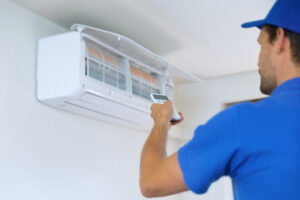Local SEO helps businesses increase their visibility, leading to an uptick in online and in-person sales. This is especially beneficial for retail stores. It can also help attract return customers.

Unlike traditional search engine optimization, local seo focuses on signals that show Google that your business is the most relevant in a given area. This includes website content, Google My Business profiles, citations, and reviews. Consult with Principal Digital Solutions for expert guidance.
Local SEO is the process of optimizing your website for local search queries. This includes keyword research, meta tags, page content, internal linking, and images. The main objective is to improve your ranking in Google’s local pack results. This helps drive traffic to your site and increase customer conversions. There are many factors that contribute to local SEO, including proximity, prominence, and review signals. Proximity refers to the proximity of your business to the searcher. For example, if a user searches for “best scent candles for dentists,” the business that is closest to them will rank higher in the results. Prominence refers to the number of positive reviews and recommendations a business has. This can be achieved by improving the quality of your products and services, and by encouraging customers to leave positive reviews.
The key to success in local SEO is to have a clear understanding of your target audience. This will help you to select the right keywords for your campaign. You should also consider the competition for those keywords. A tool like Semrush can help you find out what your competitors are targeting and how you stand against them.
Another important factor is your website’s structure and navigation. A well-organized site with clear headings and subheadings will make it easier for search engines to crawl. Additionally, it will be more likely that your visitors will stay longer on your site and browse more pages. Having a short URL is also beneficial for local SEO, as it increases the likelihood of clicks and improves readability.
Lastly, it is important to ensure that your website is mobile friendly. This is because many searchers use their phones to search for local businesses. A mobile-friendly website will improve the experience for your customers and can lead to increased revenue.
A well-optimized website will have a few other elements, including a clear title tag and description. These should contain keywords that your audience is searching for. You can also include a call to action, which encourages people to take an action on your site.
Google My Business
Creating a Google Business Profile is one of the most important steps in local SEO, as it allows businesses to appear in search results and on Google Maps. However, it’s important to keep in mind that GMB listings do not replace a website. Instead, they should complement the site and drive traffic to it.
To maximize the impact of your Google My Business listing, focus on keyword research and optimization. This includes optimizing the primary and secondary categories on your profile. Choose keywords that reflect your business’s offerings and target audience. Also, consider adding service categories to your listing. However, be careful not to add too many categories, as this may send a signal that your business isn’t highly specialized.
Another way to improve your Google My Business profile is to build citations and local backlinks. These are 3rd party sites that link back to your business and help build trust and consistency. Additionally, make sure your NAP information is consistent across all online directories.
You can also enhance your Google My Business profile by adding high-quality photos of your products and services. This will improve your profile’s online reputability, with some reports claiming that Google Business profiles with photos receive 200% more views than those without them. However, be sure to use photos that reflect your business and avoid generic or stock images, which can hurt your rankings.
It’s also important to update your Google My Business profile regularly. This ensures that your company’s contact information is up-to-date and accurate, which is a critical component of local SEO. If you don’t update your profile regularly, it will be hard for potential customers to find your business and can impact your visibility in the search results.
One of the most common issues with Google My Business is a suspended account, which can prevent your listing from showing up on Google Search and Maps. To resolve this issue, visit Google’s troubleshooter or use a tool like SMB Everywhere to verify your account. You can also try updating your name, phone number, or address to fix the problem.
Local link building
Local link building is a key component of a successful local SEO strategy. It involves acquiring links from websites that are relevant to your geographical area, thus increasing your business’s online visibility and local search rankings. It can be done using a variety of strategies, from leveraging local online business directories to participating in community events. This technique also helps boost your Google Business profile’s credibility, making it more likely to rank higher in search results.
Getting links from local sites can be challenging, but it is worth the effort. A good place to start is by searching for your competitors’ backlinks using a tool such as Semrush or Ahrefs. These tools can show you the backlinks that your competitors have, as well as their domain authority (DA). You can then contact these sites and ask for a link.
Another effective way to build local links is by creating content. This can include blog posts, guest posting, and submitting to local directories. However, it’s important to focus on quality over quantity when creating local content. Poor-quality content can lead to a Google penalty, so it’s essential to create high-quality content that is relevant to your local audience.
Another great way to build local links is by promoting your business’s website on social media. This can be especially useful if you’re trying to rank for local keywords. Social media listening can also help you identify local citations that need to be fixed. For example, you may notice that your local business’s NAP is inconsistent across different platforms and websites. You can then use a tool like The HOTH, Moz Local, or Whitespark to correct these errors and improve your local search ranking.
Local link building can be difficult to do, but it’s important for your business’s success. It can boost your visibility and brand awareness, and help you attract more local customers. It’s also a great way to improve your local search rankings and increase organic traffic. A local link-building strategy can also increase your website’s domain authority. In one case study, a storage company in Dublin saw its traffic spike during the COVID-19 pandemic, which led to increased sales and new customers. The company then shared its story with local news outlets, which helped it build trust and improve its local SEO.
Local content
Local content is a powerful tool for connecting with local audiences. It can help boost search engine rankings and establish a business’ credibility in the community. In addition, it can also increase traffic and sales. It is important to focus on creating relevant and targeted content that addresses local keywords. This can be done through a variety of methods, including e-mail campaigns, social media updates, and blog posts.
The first step in creating local content is identifying the needs and preferences of the local audience. This can be done through surveys, social media interactions, and direct feedback from customers. Once you know who your target audience is, it is easier to create tailored and strategic content that will resonate with them.
It is also important to make your website content easy to read and understand. This can be accomplished by incorporating local keywords into your content and using high-quality images. You should also include contact information, business hours, and a detailed description of your services on your website. Moreover, it is a good idea to include customer reviews and testimonials in your website content. This will add value to your content and encourage potential customers to visit your business.
Another great way to connect with the local audience is through local events. Whether they are a community event or an industry conference, you should take advantage of these opportunities to reach out to your local audience. This can be a cost-effective way to build brand awareness and generate sales.
Adding local content to your website is also essential to increase your visibility on search engines. This can be done by integrating local keywords into your content and optimising your Google business profile. In addition, you can also use geo-targeted ads to promote your content on local channels.
Creating a local content strategy is an excellent way to attract new clients and engage existing ones. This can be achieved by leveraging different types of content such as blogs, videos, infographics, and white papers. Moreover, you can use data from your competitors to identify what kind of content is working best in your market. Once you have a clear understanding of what works, you can improve your own content and optimize it for local search.





